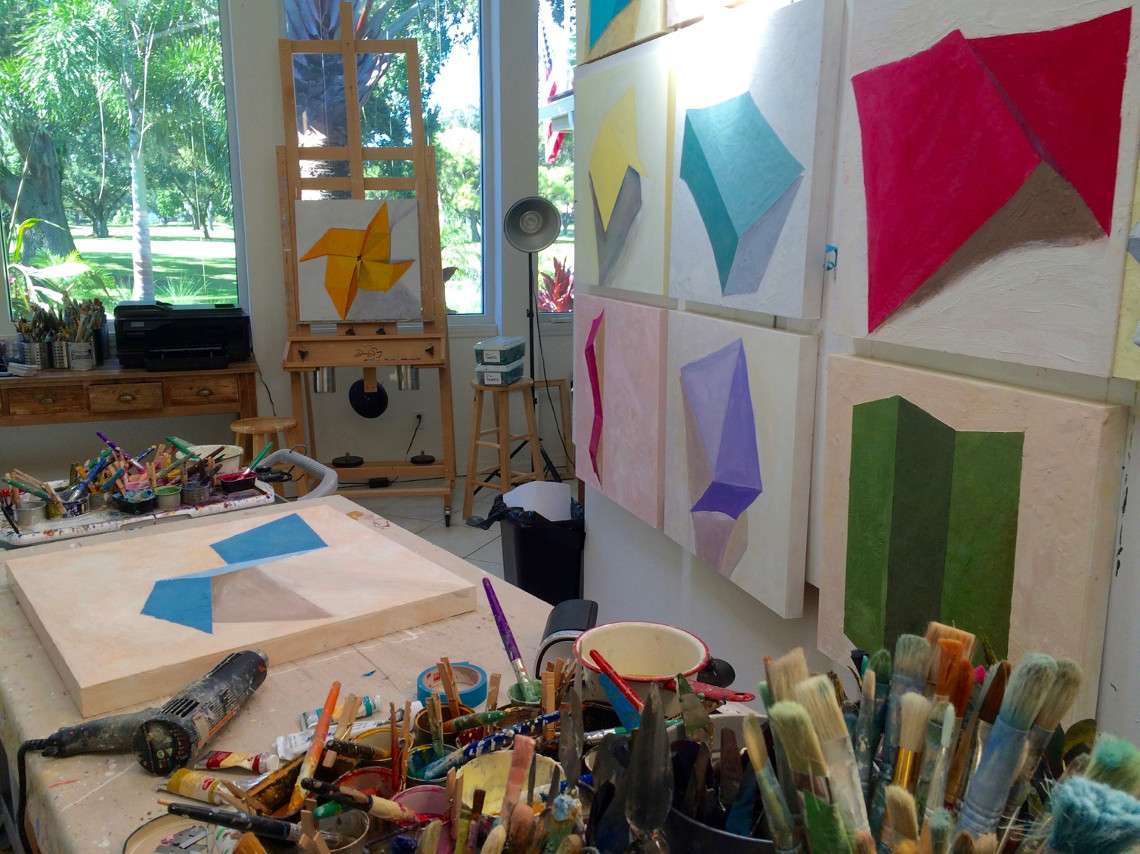Encaustic is a beeswax based paint system that is kept molten on a heated palette. It is applied to a rigid surface and reheated to fuse the paint into a final layer. The word encaustic comes from Greek word enkaustikos meaning ‘to fuse' or 'to burn in’ and refers to the process of fusing the paint. Predating oil paint by centuries, beeswax is the oldest known pigment binder.
Beeswax is impervious to moisture, making an encaustic work extremely durable. Encaustic will not deteriorate, will not yellow or darken. Encaustic paintings do not have to be varnished or protected by glass. Once applied to a surface, encaustic paint doesn't need to dry. Instead, it needs to cool. Because it cools in minutes, additional coats can be added almost immediately. Once cooled, encaustic paint presents a permanent finish, and yet the painting can be revised and reworked indefinitely. Encaustic can be laid on in delicately thin glazes or super thick encrusted impastos. It can be polished to a high gloss or carved, shaped and molded into high or low relief. It is a perfect medium for collage, monotype prints and sculptural surfaces as well.
Greek artists were painting with encaustic as long ago as the 5th century BCE. The Roman historian Pliny, who wrote in the 1st century CE, tells us it was being used for the painting of portraits and scenes of mythology on panels, for the coloring of marble and terra cotta, including on architecture, and for work on ivory. Perhaps the best known existing encaustic works are the Fayum funeral portraits painted in the 1st through 3rd centuries CE by Greek painters in Egypt. A portrait of the deceased relative, painted either in the prime of life or after death, was placed over the face of the mummy as a memorial and kept within the house for several generations before being interred. Over 600 Fayum portraits were excavated at the beginning of the 19th century and are in the collection of museums world-wide. Although these works are over 2,000 years old, the wax-based colors remain vibrant and the work amazingly fresh.
Over the intervening centuries, encaustic was overtaken by many other types of paint systems that proved easier for individual artists to work with, including egg tempera, oil, water color and acrylic paints. Artists experimented with encaustic in the 18th and 19th centuries, but it wasn't until the 20th century, with the availability of portable electric heating devices that encaustic made a resurgence among visual artists. Jasper Johns, in the 1950’s-1970’s used wax in his many flag and target paintings. Beeswax, with its organic qualities, its evocative translucency, and its inherent feeling of timelessness, can be a seductive medium for both artist and viewer. Fortunately, today many contemporary painters are returning to this ancient medium with fresh eyes.
